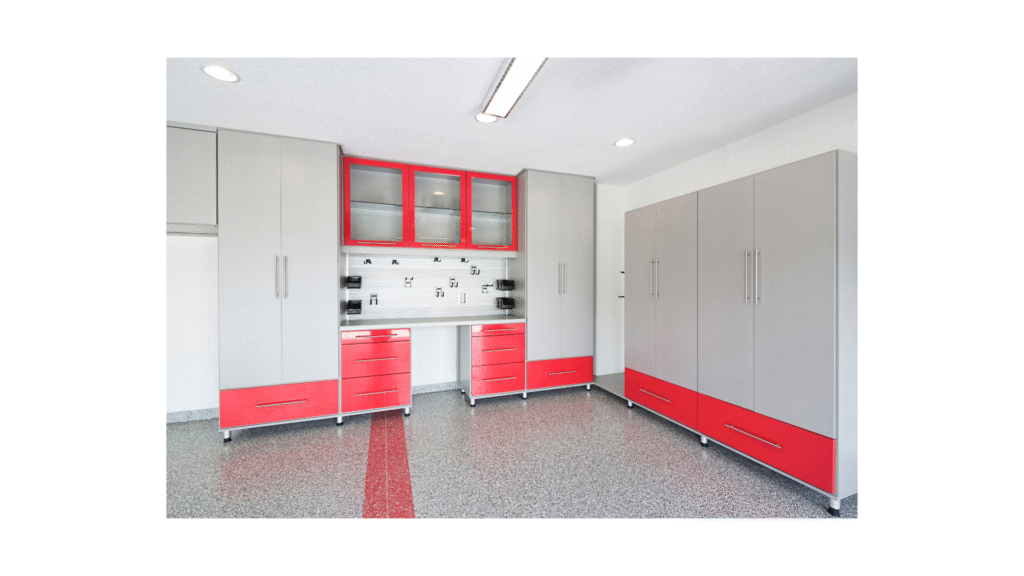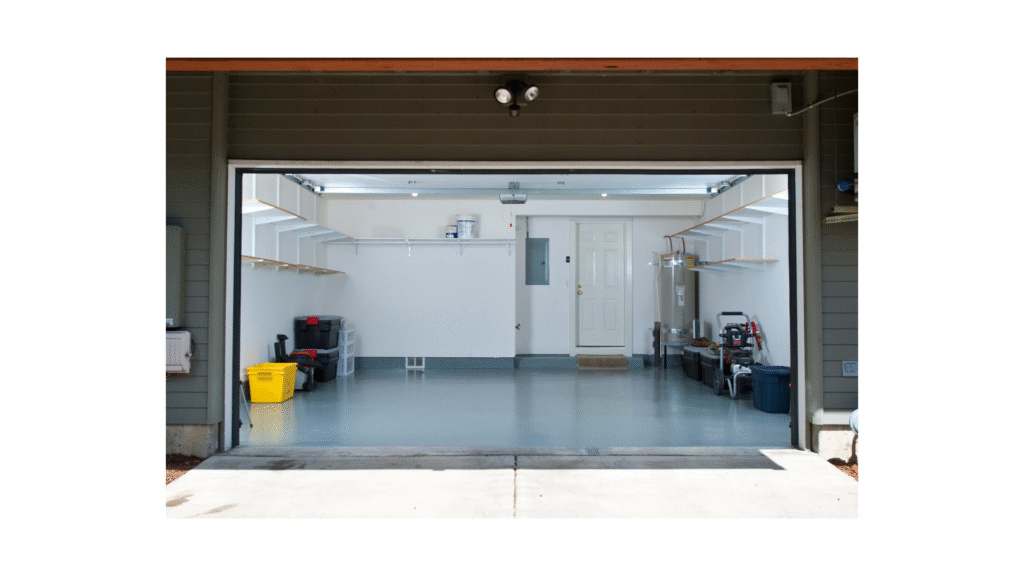
Epoxy Floors: Strength Meets Style!
Our website contains affiliate links. This means if you click and make a purchase, we may receive a small commission. Don’t worry, there’s no extra cost to you. It’s a simple way you can support our mission to bring you quality content.”
Epoxy vs. Polyaspartic Floor Coatings: Which Is Better?
When it comes to upgrading a garage, basement, or commercial space, floor coatings are one of the most effective improvements you can make. Among the most popular choices are epoxy and polyaspartic. Both create a sleek, durable surface, but they differ in cost, installation, and long-term performance. Here’s a clear side-by-side comparison to help you choose.
What Is Epoxy?
Epoxy is a resin mixed with a hardener that bonds to concrete and cures into a tough, plastic-like surface. It has been around for decades, widely used in warehouses, factories, and residential garages. Epoxy is known for being affordable, chemical-resistant, and available in a wide variety of finishes, from solid colors to metallic designs.
What Is Polyaspartic?
Polyaspartic is a type of polyurea coating originally developed for heavy-duty industrial uses. It cures extremely quickly, is UV-stable, and resists scratches, stains, and hot-tire pickup better than epoxy. While it costs more, polyaspartic has grown in popularity for homeowners who want professional-quality floors in just one day.
Durability and Longevity
Epoxy is strong and long-lasting, often holding up for 5–10 years in a residential garage. However, it is rigid, which makes it more likely to crack if the concrete shifts, and it can yellow or fade in sunlight.
Polyaspartic, on the other hand, is both hard and flexible. It resists UV damage, maintains its color, and can last 10–15 years with minimal maintenance.
Winner: Polyaspartic.
Installation and Cure Time
Epoxy requires multiple coats, each of which takes several hours to dry. A full installation usually takes 3–5 days, and the surface may need a week before it’s ready for vehicles.
Polyaspartic cures in just a few hours, allowing installers to complete a project in a single day. Floors can handle light foot traffic within 2–4 hours and vehicles within 24 hours. The only drawback: the fast cure time leaves little room for DIY mistakes, so it’s usually a professional job.
Winner: Polyaspartic.

Appearance and Customization
Epoxy offers unmatched customization. Homeowners can choose from solid colors, decorative flakes, or even artistic metallic effects with a glass-like finish. However, without UV protection, epoxy coatings can discolor over time.
Polyaspartic also supports flakes, pigments, and quartz designs, and because it’s UV-stable, it holds its glossy look much longer — especially in sunlit garages or outdoor spaces. The finish tends to be thinner and clearer than epoxy, giving a modern appearance.
Winner: Tie — epoxy for creativity, polyaspartic for lasting clarity.
Chemical and Stain Resistance
Both coatings resist oil, gasoline, and cleaning products. Epoxy may stain from long-term chemical exposure and is more prone to hot-tire pickup. Polyaspartic outperforms epoxy in this area, staying cleaner and stronger against harsh fluids and tire heat.
Winner: Polyaspartic.
Cost Comparison
Epoxy is more budget-friendly, with DIY kits starting around $3–$5 per square foot and professional installation averaging $5–$10.
Polyaspartic is a premium option, typically costing $6–$12 per square foot with professional installation. Because of the fast cure, DIY installation is uncommon.
Winner: Epoxy.
Climate Flexibility
Epoxy requires moderate conditions for installation and struggles in extreme cold or humidity. Polyaspartic can be applied in temperatures ranging from 20°F to over 100°F, making it far more versatile for year-round projects.
Winner: Polyaspartic.
Pros and Cons Snapshot
Epoxy Pros: Affordable, customizable finishes, strong, widely available.
Epoxy Cons: Longer installation, UV yellowing, hot-tire pickup.
Polyaspartic Pros: Fast installation, UV stable, highly durable, low maintenance.
Polyaspartic Cons: Higher cost, requires professional application.
Conclusion
Both epoxy and polyaspartic coatings dramatically improve concrete floors, but your choice depends on priorities. If you’re looking for a cost-effective, customizable solution and don’t mind waiting several days, epoxy is a great option. If you want a premium, long-lasting floor that’s ready in 24 hours and can withstand sun, spills, and scratches, polyaspartic is worth the investment.
